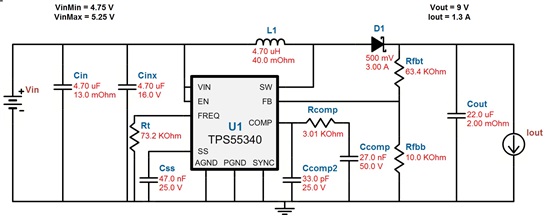I used the WEBENCH to design a boost circuit employing the TPS55340 having 5v input and 9v output at 1.3A. I am only able t get 836mA from the output without the voltage dropping below 8.3 volts. I tried dropping the frequency and changing the inductor ranging from 3.3uH to 10uH but with similar results. The output seems to not be able to deliver more than about 800ma. Do you have any suggestions on how I might go about increasing the output current?
-
Ask a related question
What is a related question?A related question is a question created from another question. When the related question is created, it will be automatically linked to the original question.


